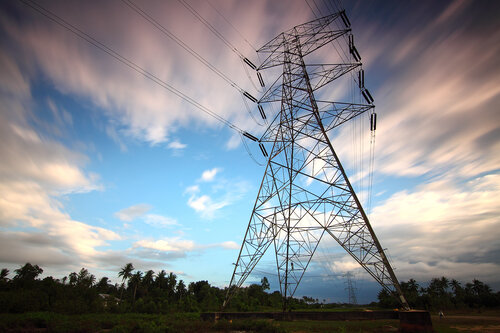
By Eben Perkins, Managing Director of Consulting Services
As we (thankfully) come out of our first heat wave of the summer, it is a helpful reminder for commercial, industrial, and institutional electric customers across New England to make sure they are prepared to take action to try to reduce their facilities’ grid demand during hot spells in July and August that could set ISO New England’s peak demand hour for 2021. Reducing grid demand during this single hour enables an end user to cut its capacity (“ICAP”) charges stemming from ISO New England’s forward capacity market for future 12-month ICAP assessment periods. CES will continue to help our clients monitor and respond to these peak demand days as we progress throughout the remainder of the summer.
Developing capabilities to reduce grid demand on the hottest summer days will enable an end user to realize ICAP savings in the near term. However, we expect this capability will also open doors for end users to take advantage of cost savings opportunities in the mid- to long-term from a variety of market signals. An end user’s ability to manage and modify grid demand during peak demand periods will be a valued asset in the future grid based on expected trends in rate design and price signals driven by beneficial electrification efforts and the characteristics of a decarbonized generation fleet. For this reason, it is useful to consider how an end user can expand its load management capabilities, whether through technology adoption or process modifications, to be ready to maximize these emerging opportunities.
In New England, an end user’s grid demand during this calendar year’s regional peak demand hour, as measured and reported by their utility meter(s), will set its capacity tag for the June 2022 to May 2023 “power year”. Each utility account’s capacity tag will be used by the end user’s electricity supplier to assess ICAP charges for the 12-month power year period. A one-megawatt reduction in grid demand by a customer during this year’s regional peak demand hour, which we expect to occur sometime between 4:00 p.m. and 7:00 p.m. in the latter days of a July or August heat wave, will save an end user roughly $70,000 on its electricity supply costs over the 12-month period starting next June. [1]
This rate design, using the single hour of peak demand that determines the sizing requirement for the generation and delivery capacity on the grid to establish an end user’s cost obligations for the coming 12 months, sends an economically efficient price signal. If an end user wants to use the grid when capacity is limited during peak demand conditions, the end user can do so, but it must pay accordingly to reflect how its demand contributes to the need to expand the grid through adding incremental generation. The amount of generation capacity required to reliably serve load on an annual basis is dictated by the single hour of peak use; total kilowatt-hour consumption over the course of the year has only an indirect relationship to this capacity requirement.
ICAP charges relate only to the cost of electric generation capacity. End users’ capacity tags are multiplied by the marginal cost of adding generation capacity in New England to determine a capacity-based revenue stream paid to generation owners. This is in addition to energy market revenues the generation owners receive from selling energy.
The cost causation principle of ICAP charges also applies to the transmission and distribution systems that make up the grid’s delivery infrastructure. If an end user wants to use the grid when delivery capacity on the grid is constrained, such as a hot summer afternoon when electricity demand for air conditioning peaks, the end user can do so, but it should pay accordingly based on the incremental costs of expanding the transmission and/or distribution systems through investments in poles, wires, and transformers.
Transmission and distribution rate designs in New England differ by utility service territory and have generally not progressed as far as ICAP rate design in terms of economic efficiency. Certain utilities still charge customers for transmission and distribution capacity based on kilowatt-hour grid usage despite the fact that the costs of the transmission and distribution systems are determined by fixed capacity-based costs. In general, this is a remnant of metering technology; if utilities have not installed smart meters that can record interval grid demand, then kilowatt-hour-based transmission and delivery charges are the default rate design option. However, as smart metering deployment continues to advance, we expect transmission and distribution rate design to advance towards a more efficient structure in which a customer is assessed fixed charges where the amount of electricity used has little or no bearing on the utility’s cost of service provision (for example, utility back office and field functions, metering and billing, etc.) and is assessed marginal capacity-based rates based on the customer’s grid demand during peak conditions on local distribution circuits and on regional transmission grids.
This evolution in rate design is going to be necessary if we want to efficiently transition to a decarbonized power grid where (a) the generation fleet is dominated by intermittent wind and solar resources with little to no marginal operating costs and (b) the electrification of space heating and transportation will require significant expansion of the transmission and distribution systems. The characteristics of this future grid, in terms of cost causation for generation and delivery investments, depends not on total volume of electricity consumed but on the timing of that consumption. The cost of the grid will be dictated by the requirements to serve customers during times when the system is stressed, like today, but also when sunshine or wind falls off and these renewable generators provide little to no energy contribution.
Based on these trends, an end user’s capability to manage and modify grid demand during peak demand periods, like the actions we call for to reduce ICAP charges with the CES Self Help program, will provide substantial value in the future grid. We expect that end users who develop load flexibility will be offered a range of cost savings opportunities as we progress towards optimizing electric design across all generation, transmission, and distribution rate components.
As we and our clients think about this opportunity, we must consider how an end user’s demand management capabilities could evolve and build on current strategies. Today, most CES clients reduce their grid demand during potential ISO-NE peak demand hours in two ways: ramping up onsite generation from gas-fired or oil-fired systems or shutting down facility operations for the three- to four-hour windows on the hottest days of the summer. While these strategies can be highly effective in helping customers manage ICAP costs, these two options are by no means the only ways customers can pursue peak demand management.
Another means for a customer to consider demand management is through shifting operational practices and schedules in lieu of simply shutting down. For facilities that produce goods, examining inventory storage options to limit production during late afternoon could potentially provide a less disruptive option to curtail facility loads, especially as demand management use cases expand to include more than just the hottest days of the year. For universities and offices, shifting occupancy patterns across months or seasons to limit use during peak demand times could be considered. While these actions may be considered disruptive and burdensome to business-as-usual operations today, if the cost of using the grid during peak demand periods significantly increases, as it should under economically efficient rate design, these actions could increasingly provide value to end users that mobilize and adapt grid usage.
An alternative option for demand management that is gaining steam is to utilize behind-the-meter battery storage. Relying on onsite or localized batteries to discharge energy to a facility, instead of relying on the grid, during peak demand periods can enable minimal impact to facility operations. To date, this opportunity has been limited by prohibitive battery costs. However, over the last five years, CES has seen the cost of behind-the-meter battery storage installations in New England fall substantially and new, lucrative incentives have been established at the state level. Early adopters of battery technology in the region, including a number of CES clients, have had strong success discharging batteries on peak demand days to realize ICAP cost savings.
As more and more end users deploy battery storage for coincident peak demand management, the aggregate demand profile on the grid will flatten out as batteries are discharged at the same time. This shift is already visible in the demand profile on the hottest summer days as end users across New England curtail loads. As this trend progresses, end users with battery systems will need to add energy capacity to their systems to expand discharging durations from three- or four-hours to five- or six-hours. While this expansion requires investment, the falling cost of batteries will help mitigate this impact.
Electric demand management strategies will vary by end user based on the customer’s needs. CES helps clients think about their options for demand management today and in the future to be ready and responsive to changes in price signals and operational requirements. Please consult with your CES Energy Service Advisor prior to implementing actions to avoid coincident capacity costs. It is important that existing and future commodity contract structures are compatible with planned demand reduction activities. CES looks forward to helping our clients monitor peak demand days this summer and in the coming years to manage ICAP costs, and to build on these demand management capabilities to take advantage of new cost savings opportunities in the future grid.
[1] This estimate assumes an end user has an electricity supply agreement with capacity charges assessed on a pass-through basis, e.g., capacity charges are not collected by its supplier at a fixed rate per kilowatt-hour of grid usage. If a customer uses a fixed all-inclusive supply product, the capacity tag reduction resulting from actions this summer should contribute towards lowering fixed supply pricing in the customer’s next supply renewal.
